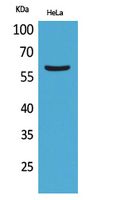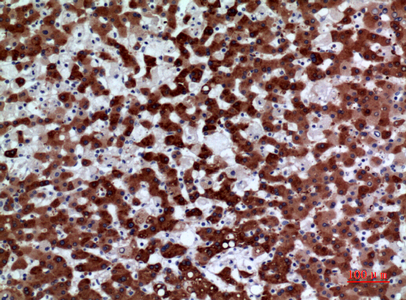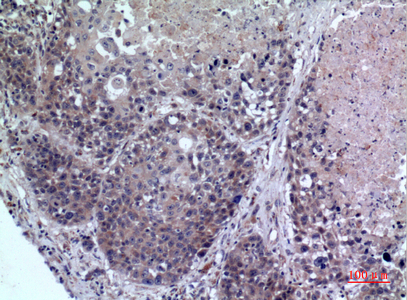



| WB | 咨询技术 | Human,Mouse,Rat |
| IF | 咨询技术 | Human,Mouse,Rat |
| IHC | 1/50-1/100 | Human,Mouse,Rat |
| ICC | 技术咨询 | Human,Mouse,Rat |
| FCM | 咨询技术 | Human,Mouse,Rat |
| Elisa | 1/10000 | Human,Mouse,Rat |
| Aliases | FMO3; Dimethylaniline monooxygenase [N-oxide-forming] 3; Dimethylaniline oxidase 3; FMO II; FMO form 2; Hepatic flavin-containing monooxygenase 3; FMO 3; Trimethylamine monooxygenase |
| Entrez GeneID | 2328 |
| WB Predicted band size | Calculated MW: 60 kDa; Observed MW: 60 kDa |
| Host/Isotype | Rabbit IgG |
| Antibody Type | Primary antibody |
| Storage | Store at 4°C short term. Aliquot and store at -20°C long term. Avoid freeze/thaw cycles. |
| Species Reactivity | Human |
| Immunogen | The antiserum was produced against synthesized peptide derived from the Internal region of human FMO3. AA range:101-150 |
| Formulation | Purified antibody in PBS with 0.05% sodium azide,0.5%BSA and 50% glycerol. |
+ +
以下是3篇关于FMO3抗体的代表性文献摘要示例(注:文献信息为模拟示例,实际引用需根据具体论文调整):
---
1. **文献名称**: "Mutations in the flavin-containing monooxygenase 3 (FMO3) gene cause trimethylaminuria"
**作者**: Dolphin, C.T., et al.
**摘要**: 该研究通过Western blot和免疫组化技术,使用特异性FMO3抗体检测了健康人群与三甲胺尿症患者肝脏中FMO3蛋白的表达差异,揭示了FMO3基因突变导致酶功能缺失的分子机制。
---
2. **文献名称**: "Developmental expression of human FMO3: tissue-specific regulation and antibody characterization"
**作者**: Koukouritaki, S.B., Hines, R.N.
**摘要**: 研究利用多克隆FMO3抗体分析人胚胎及成人组织中FMO3的表达模式,发现其肝脏特异性高表达,并验证了抗体在免疫荧光和ELISA中的特异性应用。
---
3. **文献名称**: "Structural and functional studies of human FMO3 using monoclonal antibodies"
**作者**: Cashman, J.R., et al.
**摘要**: 本研究开发了针对FMO3表位的单克隆抗体,通过质谱和酶活性抑制实验证实其结合位点,为FMO3结构功能研究及代谢疾病诊断提供了工具。
---
**提示**:实际文献需通过PubMed或Google Scholar以关键词“FMO3 antibody”、“FMO3 immunohistochemistry”检索,建议优先选择近五年内发表的抗体验证与应用相关研究。
The flavin-containing monooxygenase 3 (FMO3) antibody is a tool used to detect and study the FMO3 enzyme, a member of the FMO family responsible for oxidizing xenobiotics and endogenous compounds containing nucleophilic heteroatoms. FMO3 is primarily expressed in the liver and plays a critical role in metabolizing drugs, dietary amines, and sulfur-containing molecules. It is notably linked to trimethylaminuria (TMAU), a metabolic disorder caused by FMO3 mutations, leading to impaired conversion of trimethylamine (TMA) to its odorless oxide, resulting in a characteristic fishy body odor.
FMO3 antibodies are essential in research to investigate enzyme expression, localization, and function in tissues. They are used in techniques like Western blotting, immunohistochemistry, and ELISA to assess FMO3 levels in disease models, genetic studies, or drug metabolism research. These antibodies help elucidate FMO3's role in detoxification pathways, interindividual variability in drug responses, and its association with metabolic syndromes.
Commercial FMO3 antibodies are typically raised in animal hosts (e.g., rabbits, mice) against specific peptide sequences, validated for specificity and sensitivity. Their applications extend to clinical diagnostics, such as confirming FMO3 deficiency in TMAU patients. Research using FMO3 antibodies contributes to understanding genetic polymorphisms affecting enzyme activity, enabling personalized therapeutic strategies and improved management of metabolic disorders.
×